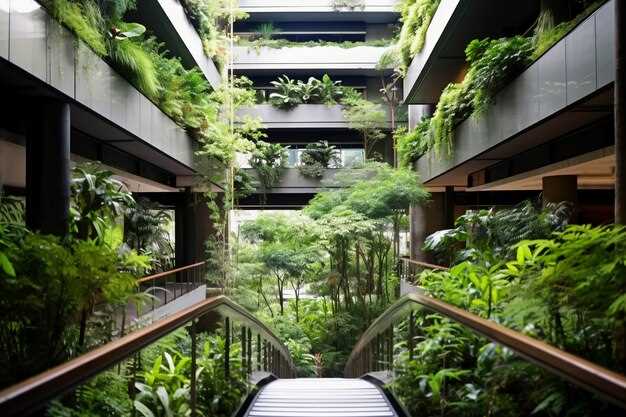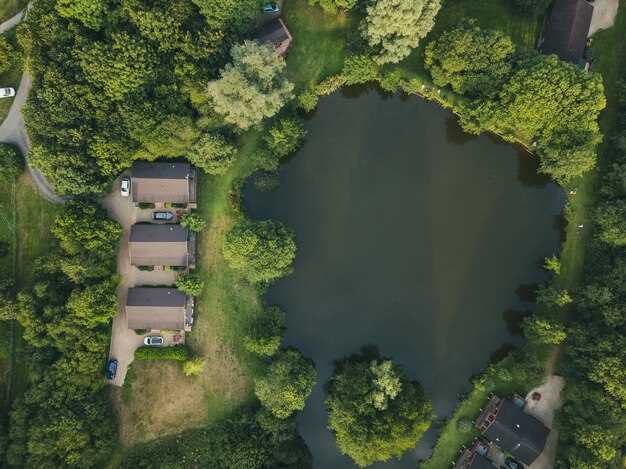Choose eco-friendly materials as your cornerstone. Prioritizing resources like reclaimed wood, bamboo, and recycled steel not only enhances sustainability but also can be cost-effective. The price of high-quality recycled materials averages around $4 to $6 per square foot, offering a great balance between sustainability and expense.
Focus on energy efficiency in your design plans. Invest in solar panels, energy-efficient windows, and smart thermostats. Solar panels, which can cost approximately $13,000 to $16,000, are a worthwhile investment, reducing electricity costs in the long run. Energy-efficient windows, priced between $270 and $800 each, can significantly lower heating and cooling expenses.
Optimize water usage systems by installing rainwater harvesting and greywater systems. Rainwater harvesting systems can set you back between $2,000 and $8,000 depending on capacity, but their ability to supply free water for non-potable uses can shrink monthly water bills substantially. Greywater systems, with costs ranging from $1,000 to $4,000, facilitate water reuse, further enhancing your retreat’s sustainability.
Leverage the power of passive design strategies. Utilize natural light and maximize ventilation to minimize energy use. Design costs for passive strategies vary, but they save on future energy expenses without compromising comfort. Orienting the building to capture maximum sunlight during colder months while providing shading options in warmer months can further enhance energy savings.
Consider local regulations and permits early in the process. Investigate building codes and environmental regulations to prevent unexpected costs. Permit fees and regulatory compliance can range from $500 to $2,000, depending on location and the scope of your project. Early planning with local authorities ensures a smooth approval process and keeps your budget intact.
Initial Planning and Cost Estimation for an Eco-Resort

Focus on securing a suitable location that aligns with your vision of sustainability. Consider factors like proximity to natural attractions, biodiversity, and available infrastructure. Your land acquisition budget typically constitutes 10-20% of the total project cost, so ensure it aligns with your financial projections. Establish a clear vision by defining the eco-friendly features your resort will incorporate, like solar panels, rainwater harvesting, and organic gardens.
Engage with architects and developers early in the process to draft initial designs and floor plans. Prioritize sustainable materials and construction techniques, which can account for 40-50% of the build costs. Request cost estimates from several contractors to find the most aligned with your budget and sustainability goals. Allocate a portion of your budget, approximately 15-25%, for sustainable technologies that enhance energy efficiency, such as geothermal heating and energy-saving appliances.
Consider infrastructure needs like access roads, utilities, and green spaces. Budget another 10-15% for these essentials. When estimating operational costs, analyze local labor markets and plan for employee expenses accordingly. Expect staffing and operational costs to make up about 20-30% of ongoing expenditures.
| Item | Estimated Cost (% of Total Budget) |
|---|---|
| Land Acquisition | 10-20% |
| Sustainable Construction | 40-50% |
| Green Technologies | 15-25% |
| Infrastructure | 10-15% |
| Operational Costs | 20-30% |
Evaluate potential revenue streams, such as eco-tourism activities and workshops, to ensure financial viability. Early investment in effective marketing strategies can spark initial interest and assist in achieving occupancy goals post-launch. Place emphasis on building partnerships with local businesses and communities to enhance the guest experience while supporting the local economy.
Site Selection and Land Acquisition: Considerations and Expenses

Focus on regions where zoning laws align with your retreat’s sustainable goals. Investigate local regulations and environmental restrictions that could impact your project. Prioritize areas with access to natural resources while maintaining minimal ecological disturbance.
Conduct thorough research on land prices in different areas to get the best value for your investment. Land costs can vary significantly, so compare multiple listings and engage local real estate experts for insights. Consider properties that offer tax incentives or grants for green building projects, which will help offset initial expenses.
Evaluate the soil quality and topography, as these factors can influence construction methods and costs. Areas with stable soil and flat terrain might lower your building expenses, whereas challenging landscapes could require additional investments in foundation work.
Ensure that the location provides essential utilities or the feasibility of installing alternative energy systems, like solar or wind power. Calculate the cost of extending utilities or creating self-sufficient systems, incorporating these figures into your budget.
Asses the accessibility to critical infrastructure such as roads and transport links. Proximity to these amenities can reduce logistical challenges and transportation costs for materials and workforce, saving you money in the long run.
Choose a site that supports your sustainability vision, balancing the need for isolation with necessary connectivity. A location that offers aesthetic value and potential for eco-tourism can enhance the appeal and profitability of your retreat.
Environmental Assessments and Permits: Understanding Legal Requirements
Begin your planning by researching federal and state environmental regulations relevant to your chosen location. Each state may have distinct requirements, so focus on the specific guidelines applicable to your area. A comprehensive environmental assessment typically includes an evaluation of the impact on local wildlife, water resources, and air quality.
- Consult the National Environmental Policy Act (NEPA) guidelines for federally mandated assessments.
- Engage a local environmental consultant to ensure compliance with state-specific regulations.
Permitting processes vary but generally involve obtaining approvals from agencies such as the Environmental Protection Agency (EPA) and state-specific bodies. The following steps streamline the permit acquisition:
- Conduct a preliminary site assessment to identify any environmentally sensitive areas.
- Prepare required documents, including project plans and environmental assessments, for submission.
- Submit applications to relevant agencies, factoring in potential lead times in your project timeline.
A proactive approach to environmental assessments and permits safeguards against legal complications, ensuring project continuity. By adopting best practices and working closely with professionals, your sustainable retreat can align seamlessly with environmental regulations.
Developing a Sustainable Design: Architect and Consultant Fees
Engage with an architect experienced in sustainable designs as early as possible. These experts typically charge between 5% to 20% of the total project cost, depending on involvement level. Prioritize those with a LEED certification or similar credentials to guarantee eco-friendly and energy-efficient solutions.
Investigate their portfolio to confirm familiarity with sustainable materials and construction methods. Consulting fees might vary greatly. For instance, energy consultants can charge $150 to $300 per hour to design efficient systems, reducing long-term operational costs.
Negotiate a fixed fee arrangement with consultants where possible to manage budget predictability. Consider bundling services when collaborating with firms offering multiple specialties, which may lead to discounts. Aligning with consultants having local knowledge helps ensure compliance with regional building codes and environmental regulations.
Utilize tools like BIM (Building Information Modeling) during the planning phase. This technology allows architects and consultants to create detailed virtual models, optimizing material usage and minimizing waste. Upfront costs of these services get offset by savings on materials and labor.
Make sure to establish clear communication channels to facilitate swift decision-making. Schedule regular reviews of design plans with your architect and consultants to stay aligned with sustainability goals and budget constraints.
Consider how consultant expertise in renewable energy sources like solar or geothermal systems can integrate into your design for long-term benefits. These systems may involve higher upfront consultant fees, but lead to significant savings over the project’s lifespan.
Budget Allocation for Green Technologies and Materials
To effectively allocate your budget towards sustainable technologies and materials, prioritize the integration of key eco-friendly components. Consider the following breakdown to guide your spending:
- Insulation and Energy Efficiency: Allocate approximately 25% of your budget to high-quality insulation materials like wool or recycled cellulose. Energy-efficient windows and doors should also be included to minimize heat loss.
- Renewable Energy Systems: Dedicate up to 30% to solar panels and possibly wind turbines if your location supports it. Installing an energy storage system such as lithium-ion batteries is another smart investment.
- Water Management: Plan for around 15% of your budget to be spent on rainwater harvesting systems and greywater recycling. Choosing low-flow fixtures for conservation can further support your sustainability goals.
- Sustainable Materials: Reserve 20% for purchasing materials with lower environmental impact such as FSC-certified wood, bamboo, or reclaimed materials. These options reduce carbon footprints and enhance eco-credentials.
- Smart Home Technologies: Allocate the remaining 10% to smart systems that enhance energy efficiency. This includes programmable thermostats, smart lighting, and energy monitors that optimize usage and reduce waste.
Adjust these percentages based on specific needs and site conditions to ensure your retreat remains both comfortable and sustainable while adhering to budget constraints.
Construction and Operational Costs of a Retreat

Start with a detailed project plan to effectively manage construction and operational expenses. Establish a clear timeline and budget that encompasses site preparation, permits, and sustainable materials. Allocate a significant portion of your budget, typically around 40%, to labor costs, emphasizing skilled workers familiar with eco-friendly construction techniques.
Choose sustainable materials such as reclaimed wood and recycled steel, which, although sometimes pricier upfront, offer long-term savings in energy efficiency. Opt for renewable energy systems like solar panels, which, depending on location and size, can range from $15,000 to $30,000 but reduce electricity bills significantly over time.
Prioritize water conservation systems, such as rainwater harvesting and low-flow fixtures. Installing a rainwater system might cost $2,000 to $5,000, yet ensures a sustainable water supply, cutting future costs. Consider wastewater treatment through on-site solutions like a constructed wetland, which can be established for approximately $5,000 to $7,000.
Direct operational cost management to energy efficiency strategies. Implement smart systems to regulate lighting, heating, and cooling, which can save up to 25% on utility costs. Also, consider ongoing maintenance plans to anticipate potential expenses better. Regular checks of energy systems, water management, and structural components help avoid costly repairs.
For staffing, efficient planning requires a flexible approach, balancing permanent staff with on-call experts. This optimization reduces labor costs, without sacrificing service quality. Plan staff training focused on sustainability practices to align operational procedures with the eco-friendly goals of the retreat.
In conclusion, a holistic approach blending careful planning with sustainable technologies will not only control initial costs but create a retreat that stands as an enduring model of environmental responsibility.
Labor and Construction Material Costs
Begin by researching local labor rates to ensure fair compensation while staying within budget. Labor costs fluctuate significantly across different regions, so obtaining multiple quotes from contractors can lead to substantial savings. Consider a mix of skilled and unskilled labor to optimize costs without sacrificing quality. Prioritize hiring local workers to minimize travel expenses and support the community.
Material costs form a significant part of the budget. Opt for sustainable materials like reclaimed wood or recycled steel, which not only reduce environmental impact but often come with lower price tags. Purchasing materials in bulk or during off-peak seasons can provide significant discounts. Establish relationships with local suppliers for potential deals directly benefiting both your project and their business.
Focus on minimizing waste by precise material planning and recycling on-site. Engage in practices like using modular construction to reduce time and cost while maintaining quality. Leverage digital tools for detailed planning and accurate resource allocation, ensuring a smoother workflow and fewer surprises. By integrating local talent and sustainable material choices, you create a retreat that’s both cost-effective and environmentally responsible.
Infrastructure Development: Water, Energy, and Waste Systems
Prioritize installing a rainwater harvesting system to ensure a reliable and eco-friendly water source. This method not only reduces reliance on municipal water supply but also minimizes water bills. A well-designed system can capture enough rainwater to meet all non-potable water needs, reducing overall consumption significantly.
For energy, invest in solar power solutions. With the declining cost of solar panels and available tax incentives, integrating solar energy into your retreat is both financially and environmentally advantageous. Consider installing backup batteries to store excess energy, ensuring a stable power supply even during cloudy days.
Tackle waste management by implementing a composting and recycling program. These systems transform organic waste into valuable fertilizer and reduce the volume of waste sent to landfills. Choose biodegradable products to further enhance the retreat’s sustainability.
Avoid chemical-heavy sewage systems by adopting a constructed wetland or a biogeoreactor. These natural sewage treatment solutions effectively treat wastewater while preserving the surrounding ecosystem.
Incorporating these infrastructure strategies not only aligns with sustainable building practices but also positions your retreat as a model of modern environmental stewardship. These systems require initial investment but lead to substantial long-term savings and benefits for the planet.
Cost Implications of Renewable Energy Integration
Installing solar panels can initially cost around $15,000 to $30,000. Opt for high-efficiency panels to maximize output, reducing your yearly electricity expenses significantly. Consider the federal investment tax credit, which offers a 26% rebate on installation costs, lowering your financial burden.
Wind turbines present another alternative. Smaller residential turbines cost between $10,000 and $20,000, providing ample energy for a retreat in locations with consistent wind speeds. Be sure to check local zoning regulations before installation as these can affect setup costs.
Geothermal systems, while initially pricey at $20,000 to $45,000, deliver substantial savings in heating and cooling over time–up to 70% less energy use compared to traditional systems. This makes them a viable option for a sustainable retreat, offering both eco-friendliness and long-term economic benefits.
To further economize, integrate battery storage solutions. Investing in systems like the Tesla Powerwall or others can significantly enhance your energy independence, albeit at a cost of approximately $7,000 to $10,000 per unit. Pairing these with renewable sources ensures you store excess power for use during peak demands, enhancing sustainability.
Remember, proactive research into local incentives and grants can offset renewable energy expenses. Many states provide additional tax benefits or rebates to encourage clean energy adoption. Aligning with such programs can lead to further reductions in the overall budget.
Maintenance and Long-Term Operational Budgeting for Sustainability
Plan for regular maintenance checks by setting aside at least 5% of the annual operating budget to address routine repairs and unexpected issues efficiently. Prioritize energy-efficient technologies like LED lighting and smart thermostats, reducing energy consumption by up to 30% and shaving substantial amounts off utility bills over time.
Invest in high-quality, durable materials during the build phase to minimize long-term wear and tear, potentially decreasing future repair costs by 20%. Implement a water management system, such as rainwater harvesting, to cut down water costs and promote resource sustainability. This system can reduce annual water expenses by 50%, a significant saving for large retreats.
Introduce a waste management plan that includes recycling and composting; this not only helps the environment but can also lower waste disposal costs by an impressive 40%. Additionally, training staff on sustainable practices can lead to reduced resource consumption, making operations more cost-effective.
Reevaluate contracts with suppliers annually to ensure you are getting the most sustainable and economical materials. Maintain an updated asset management system to track maintenance schedules and identify opportunities for improving efficiency. This strategic documentation can streamline operations and extend the lifespan of equipment, delaying costly replacements.
Q&A:

How can I estimate the cost of building a sustainable retreat?
Estimating the cost of building a sustainable retreat begins with identifying the specific features and materials you plan to use. Research local building regulations and consider consulting with an architect or builder familiar with eco-friendly practices. It’s crucial to break down the costs into categories such as land, materials, labor, and permits. Don’t forget to include costs for sustainable technologies like solar panels or rainwater harvesting systems. An initial estimate can be adjusted as you gather more information, ensuring you remain within budget.
What are the most significant expenses in building a sustainable retreat?
The most significant expenses typically include the cost of land, sustainable materials, and labor. Land in desired locations can be pricey, especially if you’re seeking remoteness or scenic views. Eco-friendly materials may have higher upfront costs compared to traditional materials, but they offer long-term savings through efficiency and durability. Labor costs depend on the complexity of the design and the experience of the workers skilled in sustainable building techniques. Additionally, obtaining necessary permits and certifications might also contribute to the overall expense, so planning for these is necessary from the outset.
Are there any governmental incentives for building sustainable structures in the USA?
Yes, there are several government incentives available for building sustainable structures in the USA. These can include tax credits, rebates, and grants at both federal and state levels. The federal government offers programs like the Investment Tax Credit (ITC) for solar energy systems, while many states have their own initiatives to encourage sustainable building practices, such as rebates for installing water-saving fixtures or energy-efficient HVAC systems. It’s important to research what specific incentives are available in your state and how they can be applied to your project.
How can I ensure that my retreat remains sustainable after construction?
Ensuring long-term sustainability involves regular maintenance, efficient management of resources, and adopting eco-friendly practices. Use of smart energy systems to monitor and control energy usage can help maintain efficiency. Routine checks on systems like solar panels or water-saving devices ensure they continue operating effectively. Incorporating elements like natural landscaping and composting can also contribute to sustainability. Additionally, opting for local and renewable resources where possible reduces your retreat’s environmental footprint.
What design strategies can help reduce the cost of building a sustainable retreat?
To reduce costs while building a sustainable retreat, consider design strategies that maximize natural resources, such as optimizing passive solar design to decrease energy use. Choose modular or prefab construction techniques that can be more cost-effective and reduce construction time. Also, look for locally-sourced and recycled materials, which can be cheaper and lower transportation emissions. Involving an architect with experience in sustainable design from the planning phase can lead to a cost-efficient and environmentally friendly retreat.
What are the key factors affecting the cost of building a sustainable retreat in the United States?
Building a sustainable retreat involves several factors that significantly impact costs. Location is crucial, as land prices vary widely depending on the area. Sustainable materials are also important, as using eco-friendly options like reclaimed wood or solar panels could be more expensive initially but offer savings in the long term through energy efficiency. Additionally, labor costs are determined by local rates and the complexity of the project. Regulatory requirements, including permits and zoning, can add to the expense, especially in areas with strict environmental regulations. Finally, the size and design complexity of the retreat can influence both material and labor costs.
How can one reduce costs while maintaining sustainability in building a retreat?
Reducing costs while maintaining sustainability in a retreat project involves strategic choices. Sourcing locally available materials can cut transportation expenses and support the community. Opt for recycled or upcycled materials, which can be more affordable and sustainable. Incorporating flexible design plans allows for adapting to budget constraints without compromising on quality. Additionally, investing in energy-efficient systems and smart home technology can lead to long-term savings, offsetting initial higher costs. It is also wise to engage with environmentally-conscious contractors who might offer innovative solutions to balance cost and sustainability.




